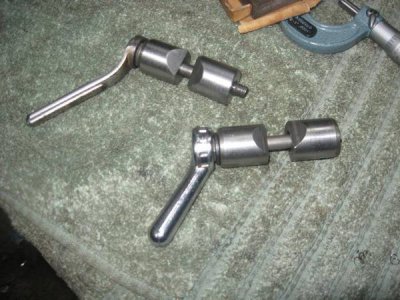- Joined
- Jan 2, 2011
- Messages
- 331
From all that you've said, I think you need to concentrate your energies on perfecting your tool bit shaping/sharpening.
What type of grinding wheel are you using? It should be fairly fine grit and the finished edge should be smooth and sharp.
You could also use a belt sander if you have one.
Steve Fox
I agree Steve. I dont have a decent wheel on any of my grinders, but I will get one.
Exactly which one would you recommend for a standard bench top grinder with 6 inch wheels???
I do have a bench top belt sander, but its too difficult to get the side and top reliefs. The grinder is a lot more eaiser for me. I realize that its not really too hard cutting HSS.. I can see me getting good at it with a little practice.. even with the grooved, uneven wheel I can do a pretty good job.

